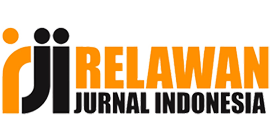Studi Awal Penghapusan Sistem Pemeringkatan: Perspektif Manajemen di Sebuah Kantor Cabang Bri Kota Semarang
DOI:
https://doi.org/10.31539/0vtgtr27Abstract
This study aims to analyze the effectiveness of eliminating the employee ranking system from a management perspective at a BRI branch office in Semarang City, focusing on individual and organizational factors that influence human resource (HR) performance. The research method used was a mixed quantitative and qualitative approach using the Analytical Hierarchy Process (AHP) to assess the weight and priority of personality and organizational criteria for improving employee performance. The results showed that organizational criteria were weighted higher than personality, with the highest scores for the fairness and motivation sub-criteria. Scenario analysis showed that maintaining the ranking system was more effective in improving employee performance, with the organizational criterion weighting 0.603 compared to 0.397 in the elimination scenario. The conclusion is that employee performance improvement strategies should focus on strengthening fair, transparent, and collaborative organizational aspects, along with developing personality aspects according to the needs of each position.
Keywords: Employee Performance, Ranking System, Analytical Hierarchy Process (AHP)
References
Alfredo, R., & others. (2022). Strategi Peningkatan Kinerja Perusahaan Melalui Pengelolaan Sumber Daya Manusia dan Kepuasan Kerja Serta Dampaknya Terhadap Produktivitas Karyawan PT Telkom Lubuklinggau. Jurnal Universitas Bina Insani Lubuklinggau, 391–401.
Arifin, A. H., Saputra, J., Puteh, A., & Qamarius, I. (2019). The Role of Organizational Culture in the Relationship of Personality and Organization Commitment on Employee Performance. In International Journal of Innovation, Creativity and Change. www.ijicc.net (Vol. 9). www.ijicc.net
Barrick, M. R., & Mount, M. K. (1991). The Big Five personality dimensions and job performance: A meta-analysis. Personnel Psychology, 44(1), 1–26.
Cameron, K. S., & Quinn, R. E. (2011). Diagnosing and Changing Organizational Culture: Based on the Competing Values Framework (3rd ed.). Jossey-Bass.
Colquitt, J. A. (2001). On the dimensionality of organizational justice: A construct validation of a measure. Journal of Applied Psychology, 86(3), 386–400.
Costa, P. T., & McCrae, R. R. (1992). Revised NEO Personality Inventory (NEO PI-R) and NEO Five-Factor Inventory (NEO-FFI) Professional Manual. Psychological Assessment Resources.
Daspar, D. (2020). Pengaruh Lingkungan, Motivasi dan Disiplin Kerja Terhadap Kinerja Karyawan. EKOMABIS: Jurnal Ekonomi Manajemen Bisnis, 1(02), 159–166. https://doi.org/10.37366/ekomabis.v1i02.31
Deci, E. L., Koestner, R., & Ryan, R. M. (1999). A meta-analytic review of experiments examining the effects of extrinsic rewards on intrinsic motivation. Psychological Bulletin, 125(6), 627–668.
Forbes. (2021). The Dangers Of An Overly Collegial Culture.
Gibbons, R. (2015). Organizational Culture and Performance.
Greenberg, J. (1990). Organizational justice: Yesterday, today, and tomorrow. Journal of Management, 16(2), 399–432.
Hidayat, M. F., Maarif, M. S., & Prasetyaningtyas, S. W. (2024). Strategi Peningkatan Kinerja Pegawai Pada Perusahaan Jasa Bidang Elektrikal dan Mekanikal PT Jayabana Sinergi Utama. Jurnal Aplikasi Bisnis Dan Manajemen. https://doi.org/10.17358/jabm.10.1.340
Katzenbach, J. R., & Smith, D. K. (1993). The Wisdom of Teams: Creating the High-Performance Organization. Harvard Business School Press.
Lastri, P., Sihombing, T., & Batoebara, M. U. (2019). Strategi Peningkatan Kinerja Karyawan Dalam Pencapaian Tujuan Perusahaandi Cv Multi Baja Medan.
Luthans, F. (2011). Organizational Behavior: An Evidence-Based Approach (12th ed.). McGraw-Hill.
Mangkunegara, A. P. (2013). Manajemen Sumber Daya Manusia. PT. Remaja Rosda Karya.
Muthoni Nduati, M., & Wanyoike, R. (2021). Employee Performance Management Practices And Organizational Effectiveness. International Academic Journal of Human Resource and Business Administration |, 3(10), 361–378. https://iajournals.org/articles/iajhrba_v3_i10_361_378.pdf
Nuckcheddy, A. (2018). The Effect of Personality on Motivation and Organisational Behaviour. Psychology and Behavioral Science International Journal, 9(2). https://doi.org/10.19080/pbsij.2018.09.555760
PLOS Biology. (2021). Promoting inclusive metrics of success and impact to dismantle a discriminatory reward system in science. PLOS Biology, 19(6), e3001282. https://doi.org/10.1371/journal.pbio.3001282
Professor, A. (2021). A study on impact of employees Personality Characteristics and Attitude on Organizational performance. In International Journal for Research Trends and Innovation (www.ijrti.org) (Vol. 6). www.ijrti.org
Rawlins, B. (2008). Measuring the relationship between organizational transparency and employee trust. Public Relations Journal, 2(2), 1–21.
Rizka Awalia, A., Fania, D., Utami Setyaningrum, D., Pendidikan Tinggi Jatinangor, K., Jatinangor, J. K., & Sumedang Provinsi Jawa Barat, K. (2020). Pengaruh Teamwork Terhadap Kinerja Karyawan (Study Kasus Pada Pt. Xyz Jatinangor). 6(2). Http://Jurnal.Manajemen.Upb.Ac.id
Robbins, S. P., & Judge, T. A. (2017). Organizational Behavior (17th ed.). Pearson.
Rotter, J. B. (1966). Psychological Monographs: General and Applied Generalized Expectancies For Internal Versus External Control Of Reinforcement (Vol. 80, Issue 1).
Saaty, T. L. (2008). Decision Making With the Analytic Hierarchy Process. International Journal of Services Science, 83–98.
Schein, E. H. (2010). Organizational Culture and Leadership (4th ed.). Jossey-Bass.
Sharmin, S., Kalam, F. A., Islam, A. T. M. F., & Aubhi, R. U. H. (2024). Impact of Emotional Intelligence on Employee Performance: A Bibliometric Approach. Journal of Human Resource and Sustainability Studies, 12(02), 243–262. https://doi.org/10.4236/jhrss.2024.122013
Simamora, H. (1995). Kebijakan Kinerja Karyawan. BPFE.
Suprihati. (2014). Analisis Faktor-Faktor Yang Mempengaruhi Kinerja. Paradigma, 12(01), 2014–2093.
Waliyyu, R. U., & Fitriani, R. (N.D.). String (Satuan Tulisan Riset Dan Inovasi Teknologi) Strategi Peningkatan Kinerja Karyawan Pt. Ciptaunggul Karya Abadi Dengan Metode Analytical Hierarchy Process.
Xie, M. (2023). Employee Motivation, Work Attitude And work performance in manufacturing enterprises in China: Inputs to innovative manufacturing performance framework. International Journal of Research Studies in Management, 11(7). https://doi.org/10.5861/ijrsm.2023.1088
Yinger, J. M. (1965). Toward a Field Theory of Behavior: Personality and Social Structure. McGraw-Hill.
Downloads
Published
Issue
Section
License
Copyright (c) 2025 Maretha Praduganti

This work is licensed under a Creative Commons Attribution-NonCommercial 4.0 International License.


